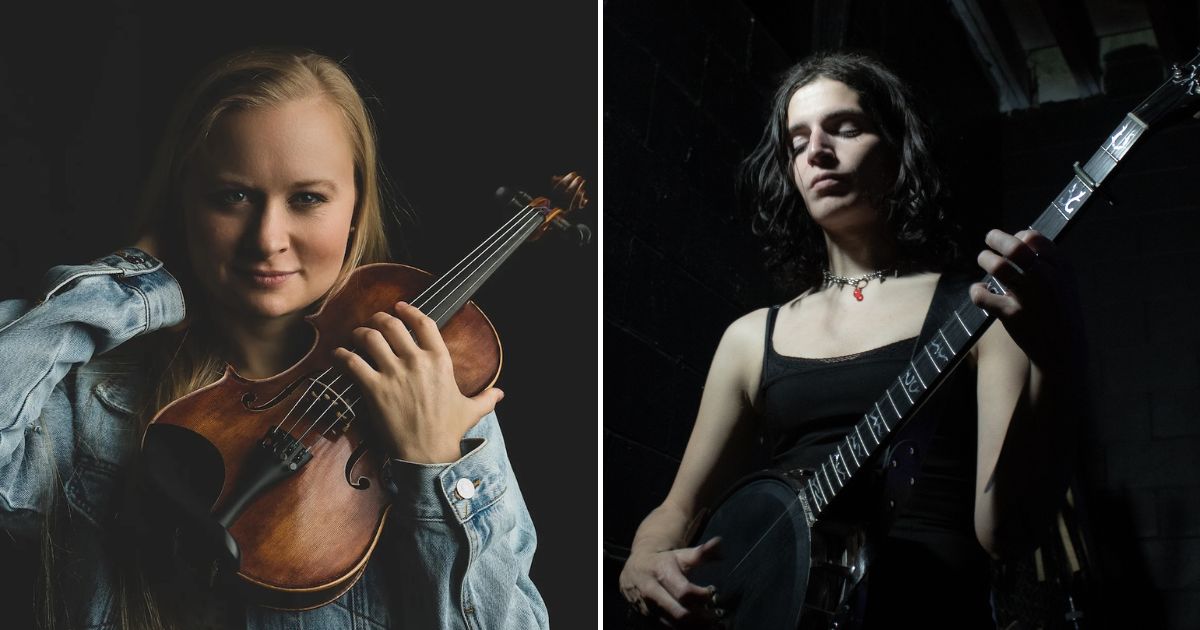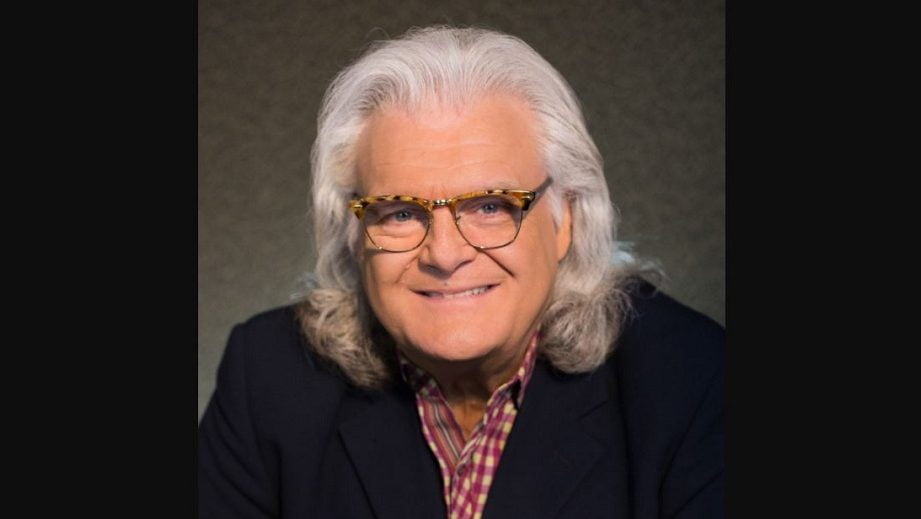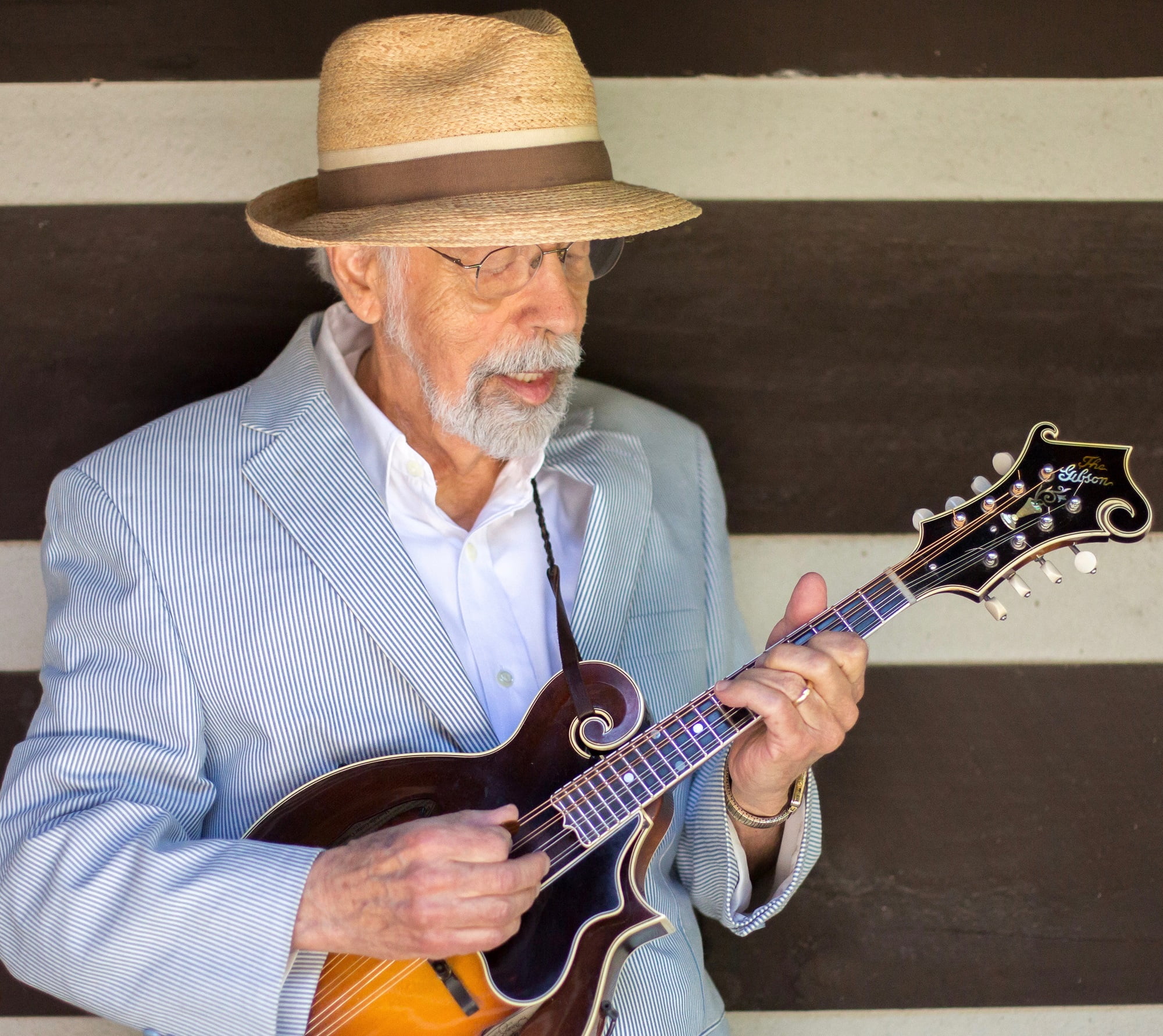When I started playing mandolin in 2004, the internet was integral to my experience. I spent countless hours on websites like Mandolin Cafe, used a PayPal account I made when I was 9 to buy albums on eBay, and downloaded countless viruses onto our family computer pirating bluegrass recordings on Limewire. When the internet went public 30 years ago, it immediately changed the world and bluegrass. By the end of the ’90s, blogging had become mainstream and bluegrass had cultivated its own corner of the web with forums and listservs like BGRASS-L. When broadband replaced dial-up, people were able to share large files such as recordings and videos and information sharing exploded.
I grew up in a generation that saw regular people like Justin Kan (who would later go on to co-found Twitch) become celebrities through vlogging and like many people my age, I wanted to be a content creator. “Content” is just the soulless marketing word for the cultural ephemera humans have always created, but in the internet age. When I was in high school, microblogging became popular with platforms like Twitter (now X) while social media sites such as Vine and Snapchat that favored short form content appeared, creating another paradigm shift towards the hyper-specific, unpolished, slice-of-life videos we now see on TikTok and Instagram Reels.
My social media career began in earnest in 2019. I was burned out from touring and was trying to find a way to stay relevant without traveling so much. I started by posting clips of myself playing tunes that I was learning, which eventually morphed into a Patreon page. Patreon became hugely popular with artists after the COVID-19 pandemic hit, but at the time I began using it there were relatively few educational bluegrass pages. I ended up formatting mine in a similar way to podcasts that I subscribed to at the time. I studied up on how the algorithm works and during lockdown began creating and posting fervently.
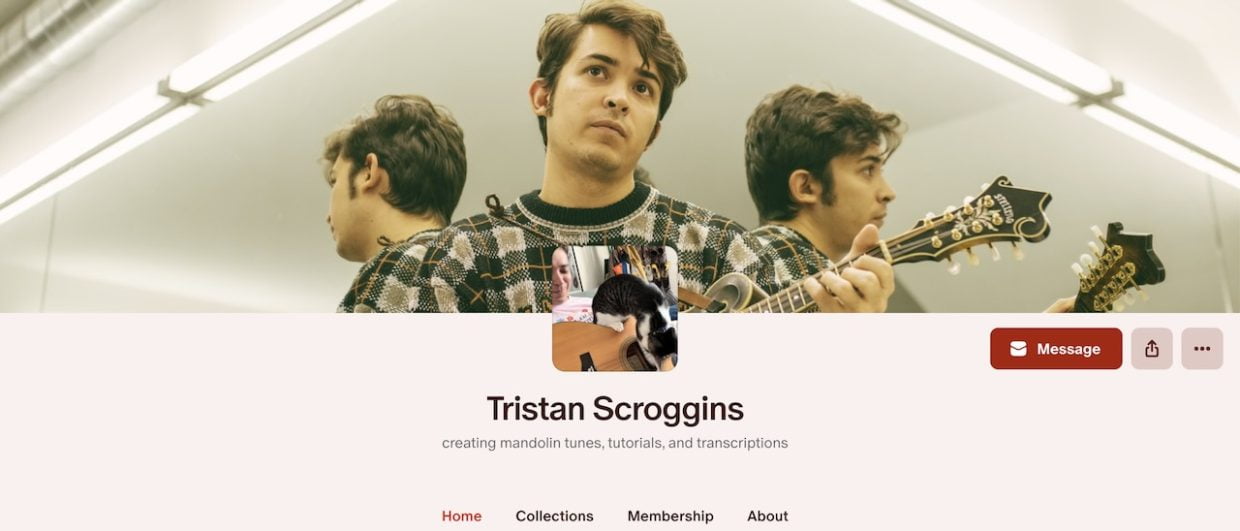
Once restrictions were lifted, I found myself drawn back into performing and had less and less time to consistently post. In the ever intensifying war for attention, consistency is key, but I found no satisfaction in churning out things I didn’t care about and the things I do care about take time. So I found myself burned out again, trying to learn how to slow down. It’s a vicious and common cycle.
Ultimately, I love creating new things and sharing them with people. This is true of all of the people on this list, many of whom are friends and part of a community that openly shares tips and tricks on how to navigate the unfiltered digital miasma of social media. For every entry on this list there are a dozen more who I couldn’t include for space. Separating the wheat from the chaff in the world of online bluegrass content can be difficult, but there are many shining beacons that have and will continue to influence those that follow them.
Billy Strings
Billy had a small cult following in his home state of Michigan before videos of him performing at festivals went viral. Videos became an integral part of Billy’s brand with footage from his concerts becoming inescapable for a time. Taping culture, the act of recording a live show and posting it online – an activity with ties to old school tapes of bluegrass shows that David Grisman, Jerry Garcia, and Sandy Rothman created and distributed along the West Coast to help spread bluegrass – had grown with social media and videos of full performances were shared religiously online. This practice has challenged more traditional bluegrass artists who have often relied on physical CD sales and see digital distribution as undermining that effort. Despite that, Billy’s most recent record Me / And / Dad was #1 in pure album sales in country, and #5 in all of music selling more than 15,000 copies upon release.
Billy’s Youtube channel has more than 300,000 subscribers and currently features everything from music videos to full concerts to behind the scenes mini-documentaries. Billy has since partnered with Nugs.net to livestream and host his current shows. Nugs is a livestream website that provides high quality video and audio of concerts, mostly rock and jam bands providing an updated version of the Grateful Dead tapers from days of yore.
Carter Vintage
Since their start nearly a decade ago, Carter Vintage Guitars has posted demonstration videos and in-store performance footage to their YouTube channel, which became a who’s-who collection of Nashville talent. While the videos started out as informal captures from around the store, by the end of 2016 the production quality had increased with Jon Roncolato and Keith Cypert making sure they looked and sounded great. While there are videos from hugely popular rock and Americana artists such as Jason Isbell, the majority of their most popular videos are from Molly Tuttle and Billy Strings from when they had recently moved to Nashville and were still relatively unknown.
Clover Lynn
@hillbillygothic Heres an old tune called Katey Daley hope yall enjoy #banjo #fyp #bluegrass #appalachia #music ♬ original sound – Clover-Lynn
Clover Lynn, also known as hillbillygothic, is from Southern Appalachia and plays banjo with a dark gothic-esque twist that challenges Steve Martin’s assertion that “you can’t play a sad song on the banjo.” She gained a massive amount of fame on TikTok and later Instagram for dueting posts. (A duet contains two videos in a split screen that play at the same time.) Specifically, she’d duet TikToks featuring men “challenging” feminism, spouting misogyny, or outright supporting violence against women. When they began spewing hate speech, Clover would appear alongside the original video loudly playing tunes like “Foggy Mountain Breakdown” over their bad opinions. This trend was extremely popular; the most popular post I could find had 8.2 million likes. Clover also uses her platform to advocate for the Appalachian region and its often overlooked BIPOC and LGBTQIA+ people, issues, and history.
Dirty Laundry
View this post on Instagram
Marcus Veliz, through his page Dirty Laundry, has created a collection of moments and memories from his travels. Marcus is a wanderer driven by mindfulness. His videos offer short, musical meditations in nature that reflect on the beauty of living in the moment, which then informs his music. It’s all very “carpe banjo.” He has cultivated a following of nearly 40,000 followers on social media, but has deliberately chosen to focus on Instagram, because he values the community that he can build there. When scrolling on an app, these moments can be completely disembodied from the people who made them, but by creating a collection of these moments, Marcus, like a poet’s anthology, has created a digital visage of himself with Dirty Laundry that feels as if Woody Guthrie had an Instagram account. (Read BGS’s 2023 feature on Dirty Laundry here.)
Educational Videos by Eli Gilbert, David Benedict, and Lessons with Marcel
Educational content is hugely popular online. While there are countless pages dedicated to teaching bluegrass, I’ve collected just a few here. All three produce educational content that is supplemented by other work. Eli Gilbert has run his YouTube channel for nearly a decade, growing an audience of people learning the banjo (that included myself). Eli centralized these folks on his Patreon page and Discord server. While he’s not the first to post banjo tutorials or start a banjo Patreon page, he is currently the most popular banjo instructor on Patreon with more than 2,000 subscribers.
David Benedict has been well-known in the mandolin scene for quite some time. He curates a Mandolin Mondays series that’s run continuously since 2016. What started as videos of him playing tunes grew into a collection of over 400 videos in partnership with Mandolin Cafe that feature incredible mandolinists from all over the world. Check out his YouTube channel, too.
Marcel Ardans has over 500 full-length videos on his channel, Lessons with Marcel. Perhaps his most unique contribution to the genre is the bluegrass YouTube video essay. Video essays are exactly what they sound like and in the last decade they’ve gained immense popularity with the general public, especially on YouTube. With educational topics such as A Guide to Bluegrass History by Subgenre to more light hearted ones like The Untold History of Bluegrass Triangle, Marcel is filling a niche in the bluegrass community by providing thoughtful analysis in a style that audiences have become accustomed to. Marcel has also collaborated with many other popular social media pickers in the same sphere such as Jake Eddy and Hayes Griffin.
In 2023, Marcel was an official social media ambassador at IBMA’s World of Bluegrass business conference, where he held a guitar contest in partnership with IBMA and Martin Guitars.
Hillary Klug
Hillary Klug gained international popularity for multiple viral videos featuring her fiddling while buck dancing. In addition to her 100,000 YouTube subscribers, she has more than a million Facebook fans with her most popular video on FB sitting at over 64 million views. Hillary has been able to leverage short form content to reach people all over the world and her frequent collaborators – such as Cristina Vane, Brenna MacMillan, and Bronwyn Keith-Hynes – have also developed substantial followings on these platforms thanks to video creation in this style.
Molly Tuttle
When sites like YouTube and Facebook launched, they created networks that many used to connect with real world friends and family. But videos uploaded to share with distant relatives had the side effect of being visible to the general public. So when Jack Tuttle began filming his children, Michael, Sully, and Molly, to share their musical talent with family back in Illinois, suddenly thousands of people could see their virtuosity. The family formed a band called The Tuttles with AJ Lee, performing regularly and continuing to post videos that would garner hundreds of thousands of views until the oldest, Molly, went to college.
I distinctly remember watching their most popular video dozens of times which featured Michael, the youngest, playing El Cumbanchero. I watched that video over and over again with a sense of both jealousy and admiration. This feeling would become familiar as similar videos – such as a very young Sierra Hull playing with Sam Bush – would also go viral.
Molly has gone on to become one of the most popular bluegrass acts currently touring. She was the first woman to win the IBMA Guitar Player of the Year and she won a Grammy for Best Bluegrass Album in 2022. In that same year, she was nominated for the Best New Artist Grammy alongside hugely popular artists such as Samara Joy and Latto. Molly’s brother Sully also still plays, professionally touring with childhood friend, bandmate, and fellow bluegrass internet child celebrity AJ Lee in her band Blue Summit.
The Petersens
The Petersens are a family band based in/near Branson, Missouri that has played theaters in that area for more than a decade. After their oldest daughter, Ellen, made the top 48 on American Idol (season 16), they began producing videos of themselves performing, which have become extremely popular. A video clip of Ellen’s audition is one of the first videos posted on their YouTube channel and currently sits at over 3 million views. They have since garnered more than 200 million views, which they’ve utilized to gain fans in countries all over the world. This form of vlogging has created an entire ecosystem and a style many other family bands emulate, such as the Sleepy Man Banjo Boys, The Family Sowell, the Cotton Pickin’ Kids, Williamson Branch, and more.
Bluegrass Barbie
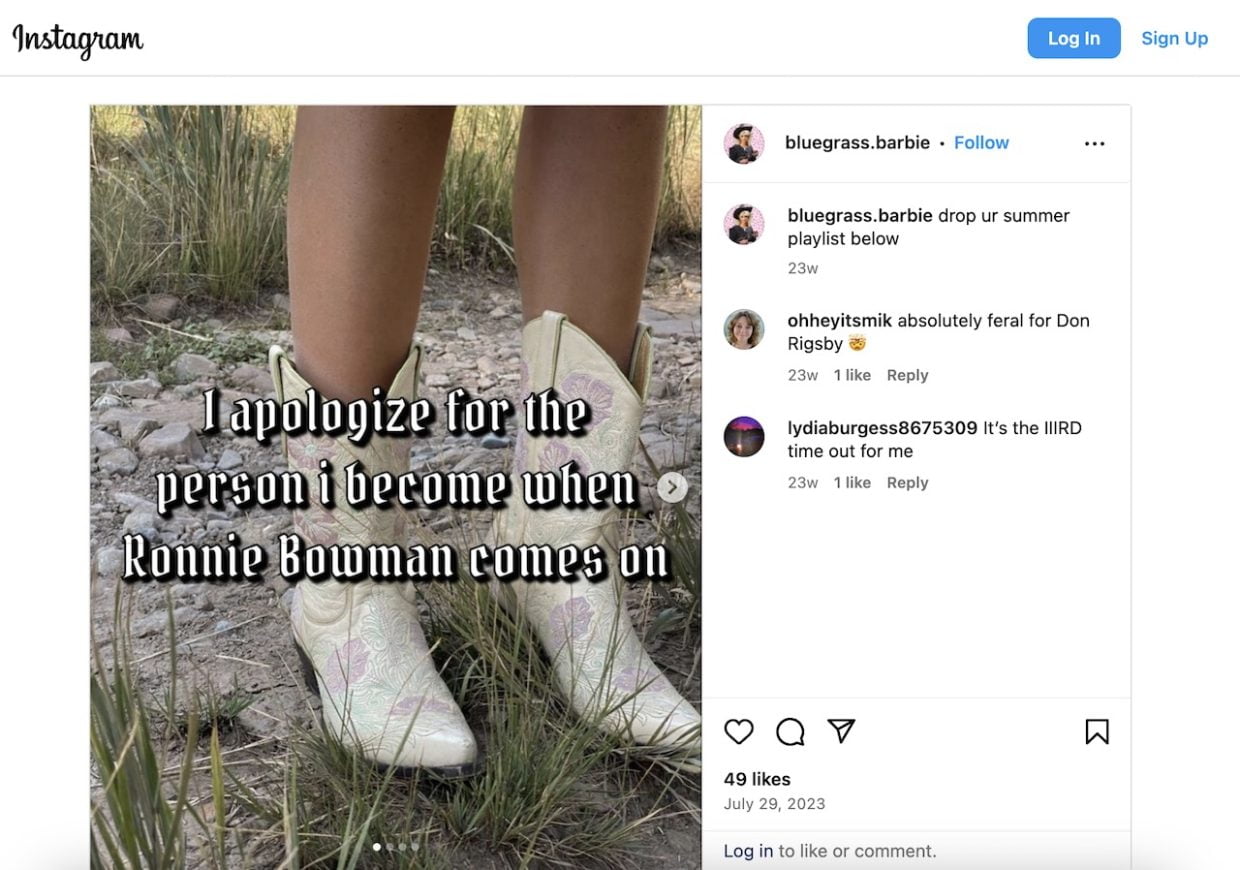
Bluegrass Barbie may not quite belong on this list, but I absolutely couldn’t write a piece about influential bluegrass social media personalities in the year 2024 without mentioning them.
As a chronically online teen, I watched the birth of internet “memes” – a term originally coined by evolutionary biologist Richard Dawkins in 1976. I very distinctly remember the first time I saw a bluegrass meme. Dread washed over me, as I was struck with a haunting vision of a future full of low effort, bottom text memes misquoting Bill Monroe. I lived in this “No Exit” style social media hellscape for years until 2023, when Bluegrass Barbie appeared.
This Instagram account doesn’t have the numbers (239 followers at the time of writing), but they do have the jokes. Rather than “dunking” on Mark O’Connor or Billy Strings ad nauseam, Bluegrass Barbie presents a look at the humor in growing up as a young woman in bluegrass in a way that is relatable, contemporary, and hilarious. It’s the only good active bluegrass meme account; fight me about it.
Russ Carson
Russ Carson, known as the banjo player for Ricky Skaggs and Kentucky Thunder since 2014, runs 81Crowe, a one stop shop YouTube Channel for banjo nerdery as well as a source of high-quality, behind the scenes footage of both his personal and professional life.
Russ creates more traditional vlog content. Videos of jam sessions have shown up on YouTube since the very beginning, but Russ innovated them by implementing a gopro he would wear on his head to film, simulating a POV experience for the viewer as a participant. In addition to performance and educational videos, Russ provides video content of private jam sessions and conversations with talented friends as well as his off-stage experience touring with one of the most well known bluegrass bands out there. His explanation of his personal thoughts on banjo as well as his other hobbies, including photography, are the kind of personal details that make vlogging what it is.
Take’s Bluegrass Album Channel
Takehiko Saiki’s Take’s Bluegrass Album Channel has an air of mystique about it. Since 2014 it has served as a digital museum where out-of-print vinyl records, albums, and CDs have been sporadically posted by the hundreds. In fact, this channel is no longer active. After posting 1,300 albums, Take started Take’s Bluegrass Album Channel Phase Two, which already has 1,000 more albums. Take is a fan of “roots music” in general and runs additional YouTube channels for folk, blues, jazz, and country music, but he seems to have a particular love for bluegrass. In addition to his album channels he has a channel for recordings of live performances from Bill Monroe to the Flying Burrito Brothers and everything in between.
These channels are a treasure trove for fans of classic bluegrass and an invaluable resource for amateur historians like myself. So much so that I felt conflicted about including it on this list for fear that it might disappear. Take is very clear that he will take down anything, immediately, at the request of the owner and states that the channel’s mission is to “make it possible for bluegrass lovers [all] over the world to have access to as many bluegrass albums not available on CD as possible.”
Photo Credit: Hillary Klug courtesy of the artist; Clover Lynn by Madison Tunnicliff.
